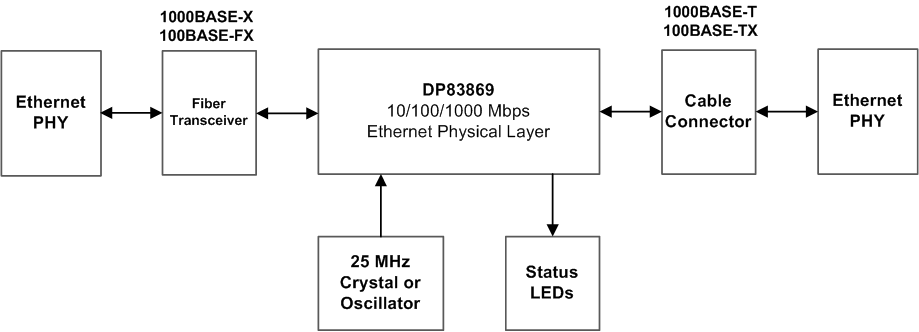SNLA443 December 2023 DP83869HM
- 1
- Abstract
- Trademarks
- 1DP83869 Application Overview
- 2Troubleshooting the Application
- 3Operational Mode Clarification
- 4Tools and References
- 5Summary
- 6References
1 DP83869 Application Overview
The DP83869HM device is a robust, fully-featured gigabit physical layer (PHY) transceiver with integrated PMD sublayers that supports 10BASE-Te, 100BASE-TX, and 1000BASE-T Ethernet protocols. The DP83869 also supports 1000BASE-X and 100BASE-FX fiber protocols.
 Figure 1-1 Standard Ethernet System Block
Diagram
Figure 1-1 Standard Ethernet System Block
Diagram Figure 1-2 Media Convertor System Block
Diagram
Figure 1-2 Media Convertor System Block
Diagram